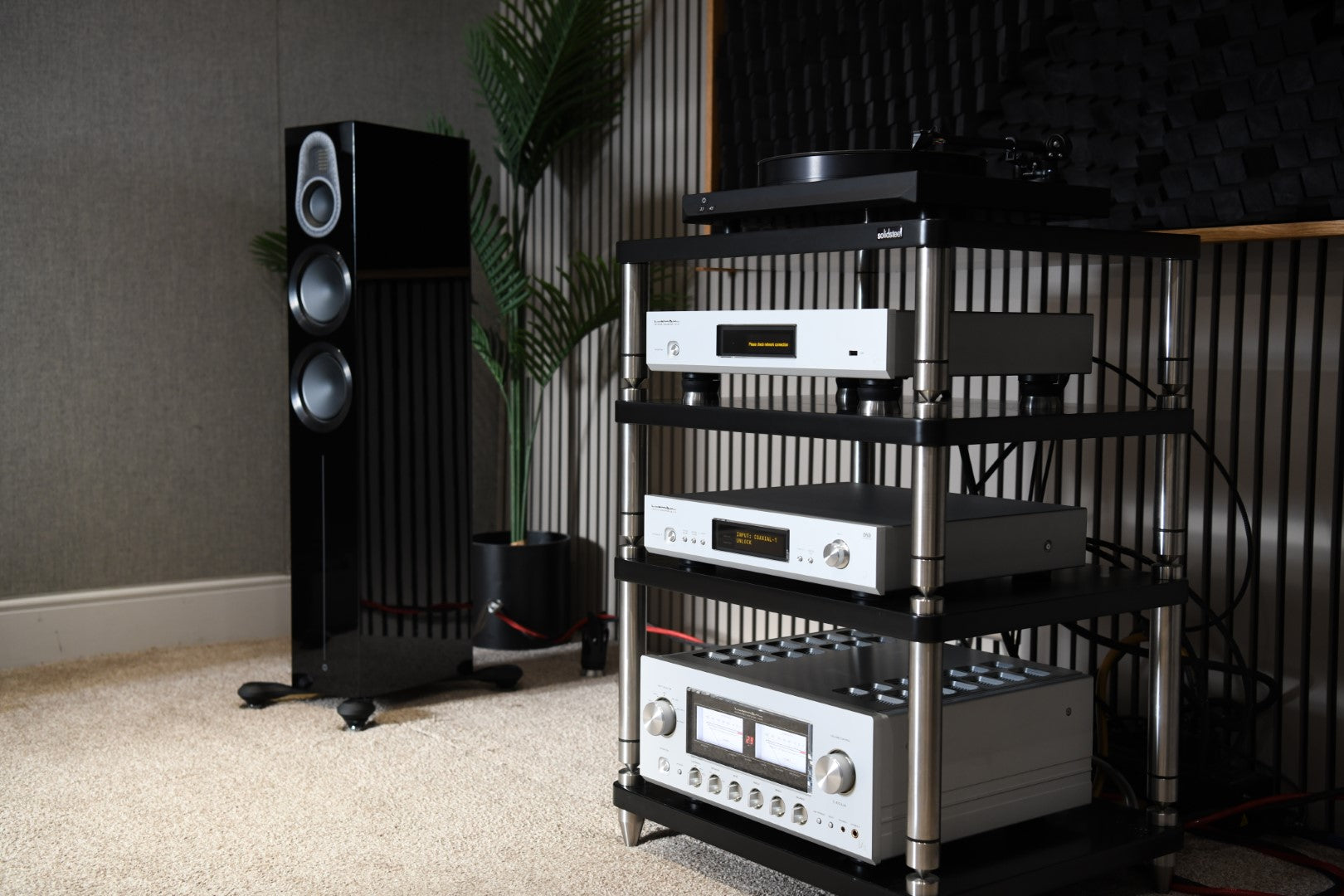How-To: Speaker Placement
Hi and thank you for viewing this page.
This section is all about speaker placement within home cinema setups and it covers the majority of scenarios we come across during installations.
Note - I am not covering specifics of complex 20+ speaker atmos setups here - there is plenty of advice from Dolby directly on this topic!
First things first - speaker placement has "optimal" positioning but with all things home cinema, there are always compromises to be made without completely rebuilding a room. As such - read the guides below as exactly that - a guide. So long as you follow this as closely as you possibly can, you'll have a pleasurable viewing experience.
A couple of topics I always make sure I cover with customers are these two:
1) a system in balance and;
2) sound separation
The first point is super important. I get all the time customers who want to spend £5,000 on a custom install speaker setup but have a tiny, underpowered amplifier that simply won't drive the speakers how they were intended. Inversely, I sometimes have people with an 11 channel amplifier who want to spend as little as possible on speakers - who will then naturally complain when it doesn't sound as good as they thought it would. Balance! Your speakers have a power output known as root mean square (RMS). It's important to not have speakers that have varying RMS outputs where possible (i.e. a centre channel speaker with an RMS of 300W and left/right channel with 60W). The result of inbalance would be audio waves cancelling others out - or simply put, isolating channels altogether which would result in a poor experience. Having equal left/centre/right channels is optimum - but as close to RMS values as possible is what you're aiming for.
The second point is separation and this happens when the speakers aren't placed correctly. Separation can cover a number of topics - here I'll cover two of them.
First is hopefully simple: does the sound originate from where it's perceived to?
For example - if you had a centre channel speaker in the ceiling and you watched a movie/TV show, you'd have audio/visual separation. The voice should be coming straight at you from the TV, but in fact it's coming from above which isn't where it should originate.
Another example - if you have your rear speakers / surround speakers incorrectly positioned, you can have a bullet sound originating in the wrong place vs what the film is showing or in some cases, the audio portion completely lost.
Second is about having bass/mid/tweeters that aren't configured correctly. You can end up with a sound system that has so much low frequency noise that dialogue is all but muffled/quiet but then action is way too loud. Alternatively, you could have loads of high frequency sounds but the bass/mid is absent which leaves you with a tinny, fatiguing listening experience.
As such - it's really important to not only POSITION the speakers correctly, but also to configure cross-over / correction within the room to make sure they're sounding as perfect as possible.
How many channels?
2, 2.1, 3.1, 5.1, 6.1, 7.1, 5.1.2, 5.1.4, 5.2.4, 7.1.2, 7.1.4, 7.2.4
What does it all mean?!
The format is "x.y.z" where:
- "x" is the number of channels or speakers at or near ear level,
- "y" is the number of channels or speakers dedicated to low bass reproduction (i.e. subwoofers)
- "z" is the number of overhead / height channels or speakers.
If a system does not have any dedicated height channels, then the last digit is left off. Here are some examples:
- 2.0 - this is a standard "stereo system" - it has two speakers to reproduce a stereo sound-field
- 2.1 - this represents a standard stereo system, but it adds a dedicated speaker for low bass reproduction (a woofer or subwoofer)
- 3.0 - this is similar to a stereo system, but it adds a dedicated centre speaker between the front left and right speakers. This can help in reproducing movie dialog and commentary clearly.
- 3.1 - as above, but with a dedicated bass speaker (subwoofer).
- 4.0 - A typical 4.0-channel system uses two speakers in the front and two in the rear or side to reproduce surround sound. But a system with 3 speakers in the front (left, centre, right) and one in the rear of the room could also qualify as 4.0
- 4.1 - as above, but with a dedicated bass speaker
- 5.0 - this is typically used to describe a traditional surround sound system with three speakers across the front (front left, centre and front right) and two speakers on the sides or in the rear to generate surround sound
- 5.1 - as above, but with a dedicated bass channel or subwoofer
- 7.0 - this type of system has three speakers in the front, 2 on the side (side surround) and 2 in the rear (rear surround)
- 7.1 - as above, but with a dedicated bass channel or speaker
- 5.1.2 - this is a "standard" 5.1-channel surround sound system, with the addition of two height channel or speakers that generate sound from above the listener
- 5.1.4 - as above but with 4 height channels or speakers to generate sound above the listener
- 7.1.2 - a standard 7.1-channel system with two additional speakers dedicated to reproducing sound above the listener
- 7.1.4 - as above, but with 4 height channels or speakers

This image represents a 7.1.4 setup in a Dolby Atmos configuration.
OK - I know how many channels I think I want. Now what?
Well hold on there - we all may *want* a 7.1.4 setup but the reality is, not all room configurations permit it. In my own lounge, I would love the above setup but my room dimensions don't permit it.
See below..

Ideally I would get rid of the corner sofa and have a sofa floating in the middle of the room facing the TV. Reality is - I can't do this (as much as the selfish side of me wanted to!) as a 3 person sofa in our living room simply won't be enough. As such - I'm compromised.
I cannot have a 4 channel height setup for immersive Atmos as this requires ceiling speakers in front of and behind the MLP (mean listening position) which in my case, is head onto the TV near the window!

So this means I can only go with a x.y.2 setup, which I am OK with.
Now to determine how many ear-level channel (x) speakers I can have.
First thing to note - Dolby recommends speakers placed within a particular angle of the MLP.
The centre channel should be 0 degrees left/right of the seating position, with the left/right channel being between 22° and 30° of the MLP.
The surround speakers should be between 110° and 120° of the MLP.
Any height speakers should be in line with the left and right channel speakers, approximately 65° forward of the seating position. The subwoofer you should experiment with but typically left/right of the centre position or to the back wall if you have a 180° option on the sub itself.
Back to my predicament - I cannot have rear speakers and surround - so I am limited to 5 channels at the front end (so 5.y.2). I could opt to go for 2 subwoofers but I am limited by space and secondly (balance), I don't want to flood the room with too much bass and lose the dialogue/mid/high frequency sounds. As such - my setup is one that will be 5.1.2 and as close to the angles (optimum) as possible.

Dolby's 5.1.2 layout sheet.

In the end, our own lounge setup looked like the above. We did look at alternatives such as TV on the top wall rather than the left, but then left a compressed stage due to view distance and still wouldn't have given us what we wanted - we felt the above was appropriate and it does indeed sound great!
So - hopefully you're a little more informed now on speaker placement and how to map this into your specific room. As always - we are on hand to support you so should you be looking at options / your own room layout, do drop us a line.
Coming up in our next "How To" guide:
- Selecting the right speakers
- Speaker cable - how to run it into difficult locations and what cables to use!

